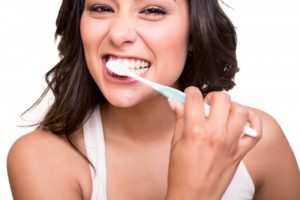Learn How to Stop Tooth Decay with Your Family Dentist in Valparaiso

Preventing tooth decay is one of your dentist’s many concerns in between your regular visits. Without regular at-home care, your teeth will only continue to be eaten away by the bad bacteria inside your mouth. Even if you look in the mirror and have no problems with how your smile looks, decay is still happening. Even if you don’t feel any pain or sensitivity throughout the day, it doesn’t mean your teeth aren’t still being attacked by bacteria. Today, we’ll be discussing how tooth decay forms and what you and your family dentist in Valparaiso can do to stop it in its tracks.
How Does Tooth Decay Develop?
Technically sugar doesn’t do anything to your teeth directly. It’s the reaction that the bad oral bacteria in your mouth have to sugars and starches that triggers the damage. Basically, large clumps of bacteria form a dental plaque on the surface of your teeth as you consume foods. This plaque takes the sugars in the foods you eat and converts them into acids. It’s these acids that slowly soften and dissolve tooth enamel.
If this plaque is not removed, eventually they’ll produce enough acid to wear your teeth down to the pulp. Depending on the level of damage done, you’ll need to have either fillings or crowns placed to prevent further damage. If it’s too significant, you’ll need to have the entire tooth extracted.
The best way to prevent those scenarios is to practice at-home care and visit your family dentist in Valparaiso.
How Do I Protect Myself at Home?
Oral hygiene is not difficult to do, you just need to stay committed to doing it. This consists of brushing twice a day with a fluoridated toothpaste, flossing daily, and if you want, using mouthwash twice a day as well. When brushing, make sure to do so for at least two minutes, dedicating at least 30 seconds to each of the four quadrants of your mouth.
Pull out 12 to 18 inches of dental floss so you have enough to wrap around your fingers. Then, count the spaces in between your teeth as you gently slide the floss in between each crack.
Look for a mouthwash that contains fluoride or uses alcohol. Fluoride works to strengthen existing tooth enamel and prevent tooth decay, while alcohol is designed to kill bad breath causing bacteria. Try both and see which one is right for you.
When Should I Visit My Dentist?
The American Dental Association recommends visiting the dentist every six months for routine cleanings and dental exams. Not only will they provide you with cleaning that no at-home care can, but they can catch early signs of tooth decay through the use of digital X-rays.
Your dentist will also be able to tell you if your current at-home care is sufficient and provide you advice on making adjustments when necessary. Make sure you have your next appointment scheduled. Set a reminder on your phone so you can prepare the day before as well!
